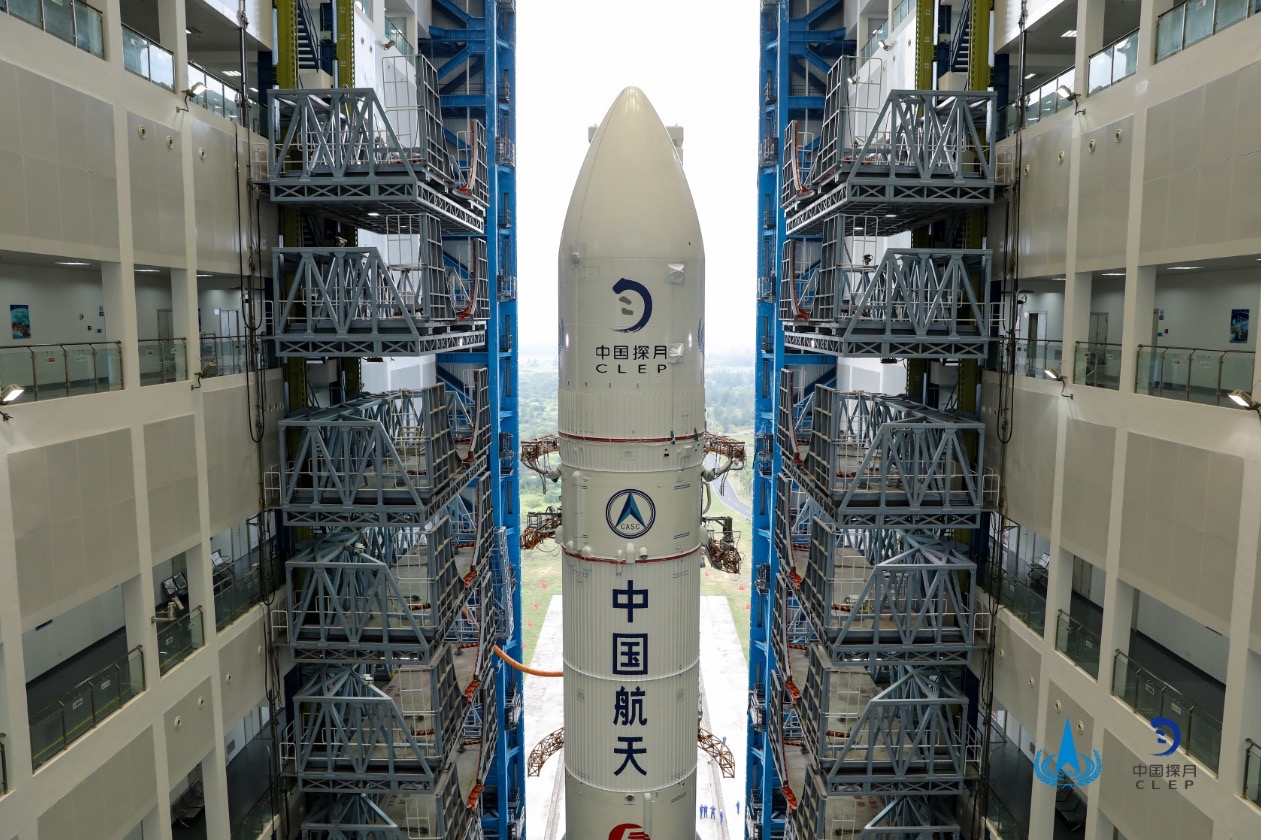
China's most ambitious moon mission to date is on the pad ahead of its planned launch next week.
A heavy-lift Long March 5 rocket topped with the robotic Chang'e 5 lunar sample-return spacecraft rolled out to its pad at Wenchang Space Launch Center in Hainan province on Tuesday (Nov. 17).
Chang'e 5 is scheduled to lift off on Nov. 24, according to a NASA description of the mission. (Official Chinese sources have said only that the launch will occur in "late November.") The 18,100-lb. (8,200 kilograms) spacecraft, which apparently consists of four modules, will then make its way to the moon.
In pictures: China on the moon! A History of Chinese lunar missions
Two of the Chang'e 5 modules will remain in lunar orbit. The other two — a sample collector and an ascent vehicle — will touch down in the Mons Rumker area of the huge Oceanus Procellarum ("Ocean of Storms"), a vast volcanic plain that has been explored by a number of other moon missions, including NASA's Apollo 12 in 1969.
If all goes according to plan, Chang'e 5's sample collector will use a robotic arm and a drill to snag about 4.4 lbs. (2 kg) of moon dirt and rock, including material that will be sourced from up to 6.5 feet (2 meters) underground. The ascent vehicle will then loft this cache to lunar orbit, where it will dock with one of the orbiting modules and then be integrated into the other, which will haul the stuff back to Earth, according to the NASA description. The moon samples are scheduled to land in China in mid-December.
That touchdown will be historic: Humanity hasn't returned any material from the moon since the Soviet Union's robotic Luna 24 mission did so in 1976. (Comet and asteroid samples have come down to Earth since then, however. And yet more collected space-rock material will be delivered in the near future, by Japan's Hayabusa2 and NASA's OSIRIS-REx missions.)
Get the Space.com Newsletter
Breaking space news, the latest updates on rocket launches, skywatching events and more!
Related: The latest news about China's space program
Chang'e 5 is the sixth mission in China's Chang'e program of robotic lunar exploration, which takes its name from a moon goddess in Chinese mythology. The Chang'e 1 and Chang'e 2 orbiters launched in 2007 and 2010, and Chang'e 3 made the nation's first soft moon landing in December 2013, putting a lander-rover duo down on the lunar near side.
The Chang'e 5T1 mission, which launched in October 2014, sent a prototype return capsule on an eight-day trip around the moon to help prepare for the upcoming Chang'e 5 mission.

Chang'e 4 pulled off the first-ever soft landing on the moon's mysterious far side, delivering a lander and rover to this largely unexplored region in January 2019. Chang'e 4 is still going strong, as is the Chang'e 3 lander. (The Chang'e 3 rover died after 31 months of operation.)
Mike Wall is the author of "Out There" (Grand Central Publishing, 2018; illustrated by Karl Tate), a book about the search for alien life. Follow him on Twitter @michaeldwall. Follow us on Twitter @Spacedotcom or Facebook.
Join our Space Forums to keep talking space on the latest missions, night sky and more! And if you have a news tip, correction or comment, let us know at: community@space.com.

Michael Wall is a Senior Space Writer with Space.com and joined the team in 2010. He primarily covers exoplanets, spaceflight and military space, but has been known to dabble in the space art beat. His book about the search for alien life, "Out There," was published on Nov. 13, 2018. Before becoming a science writer, Michael worked as a herpetologist and wildlife biologist. He has a Ph.D. in evolutionary biology from the University of Sydney, Australia, a bachelor's degree from the University of Arizona, and a graduate certificate in science writing from the University of California, Santa Cruz. To find out what his latest project is, you can follow Michael on Twitter.









